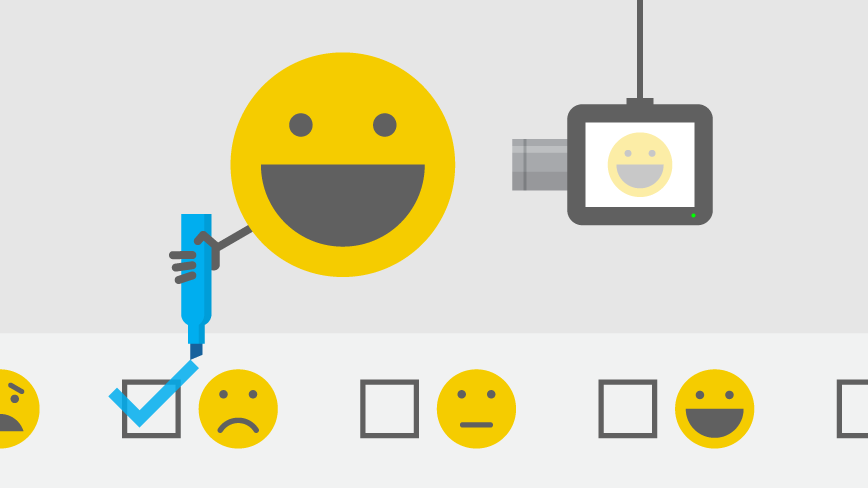Emotion recognition technology measures moods in voices and facial expressions in a quantitative way, enabling brands to be more specific about their emotional impact.
Members of your marketing test group state that they love your product, but their facial expressions tell another story. Which do you believe?
Emotion recognition technology will revolutionize the way brands connect with and appeal to their audiences in profound ways. The business world’s general move toward analytics represents a shift from gut-based decision-making in favor of observation-based ones. Yet, this hard-data approach can miss the nuance of more subjective, complex realms like that of human emotions. At least it did until now.
Rapid advances in mood-detecting technology, including voice and facial recognition software, will allow marketers and brands to account for emotions in quantitative, verifiable ways. In the near future, expect this technology to enable marketers to refine not just creative content but the structure of strategic campaigns as a whole.
Establish Concrete Emotions from Creative Content
One of the most immediate applications of emotion detection for marketing purposes lies in the ability to register emotion in response to a piece of creative work. What you find is often surprisingly different than what you expect, cementing the need for such analytical methods that make the qualitative quantitative.
The Super Bowl Moodometer project was one of the first of these facial recognition analyses to hit the marketing world, but it certainly will not be the last. The study found that the actual emotional response to commercials such as Mountain Dew’s “PuppyMonkeyBaby” spot could differ from reactions on social media.
Similar subsequent studies conducted during the 2016 holiday season were able to assign objective accolades including “most engaging festive ad” through facial recognition data rather than subjective, self-reported opinions. Marketers can use techniques such as these to ensure that their ads not only produce the desired self-described emotions in brand conversations but also the desired genuine emotions during exposure to the creative itself.
Gauge Interest in Real Time
As mood-detecting software improves, it will be able to be used for more than simply registering if emotional content elicits the desired effect. By looking out for more subtle emotions such as boredom or disinterest, brand messaging or creative can be micro-adjusted in order to maintain the highest level of engagement.
One professor at China’s Sichuan University is already using mood-detecting technology in this way to note what points in his lectures become boring to students and cause them to mentally drift. Brands can use this same observational approach to swap out the more tedious elements of their message in favor of ones that keep audiences attentive.
Make Smart Home Devices More Empathetic
Voice-activated smart home devices have been finding increasing use in recent years, from controlling light switches to playing music. A manufacturer of these appliances hopes to improve the satisfaction of its users by adopting emotion recognition software. By recognizing when users are getting irritated during their experience, the product can apologize and smooth relations over, enhancing satisfaction and reducing the negative impact of missteps.
Whether by measuring moods in your voice or face in a quantitative manner, emotion recognition technology will soon enable brands to be more specific about their emotional impact — or lack thereof — than ever before.

